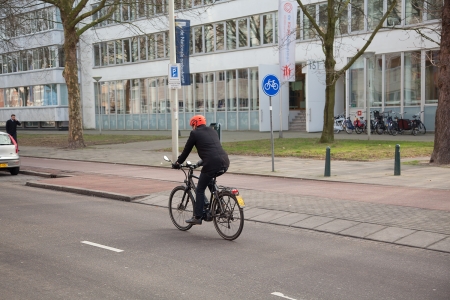Whether - in the absence of a combined bicycle/moped track - the carriageway or the bicycle track is safest for speed pedelecs is still unclear. Research into (near) crashes with speed pedelecs is scarce, often small-scale, and qualitative in nature. Moreover, trustworthy exposure data of speed pedelecs on different road types and bicycle facilities are missing. Due to their speed, speed pedelecs are hardly compatible with other traffic: they are faster than bicycles on bicycle tracks, but slower than cars on carriageways (see the question How fast do pedelec and speed pedelec riders cycle?).
One of the available studies is a Naturalistic Cycling study of road conflicts with speed pedelec riders [43]. This showed that crash risk when cycling on a bicycle facility (bicycle tracks, combined bicycle/moped tracks, and bicycle lanes, taken together) is twice as high as when cycling on a non-bicycle facility (OR[i] = 1,81). Cycling on the carriageway, compared to cycling on other parts of the road network did not increase or reduce crash risk. However, the road conflicts studied were all, with one exception, near crashes; meaning situations in which a crash could just be prevented. Near crashes are not necessarily due to the same factors as actual crashes (see [44]).
Apart from conflict/crash information, qualitative observational information is available. An analysis of camera images captured during a Naturalistic Cycling study [45] shows that speed pedelec riders on the carriageway often have to deal with negative reactions of drivers, such as honking, calling out, or headlight flashing. Speed pedelecs on the carriageway also give rise to situations that suggest traffic flow problems. This may explain why some speed pedelec riders choose to use the bicycle track: said Naturalistic Cycling study showed that speed pedelecs covered almost one quarter (23%) of the distance they should legally have cycled on the carriageway, on the adjacent bicycle track.
[i] The OR (‘odds ratio’) is s relative measure which provides information about risk increasing in certain conditions.
